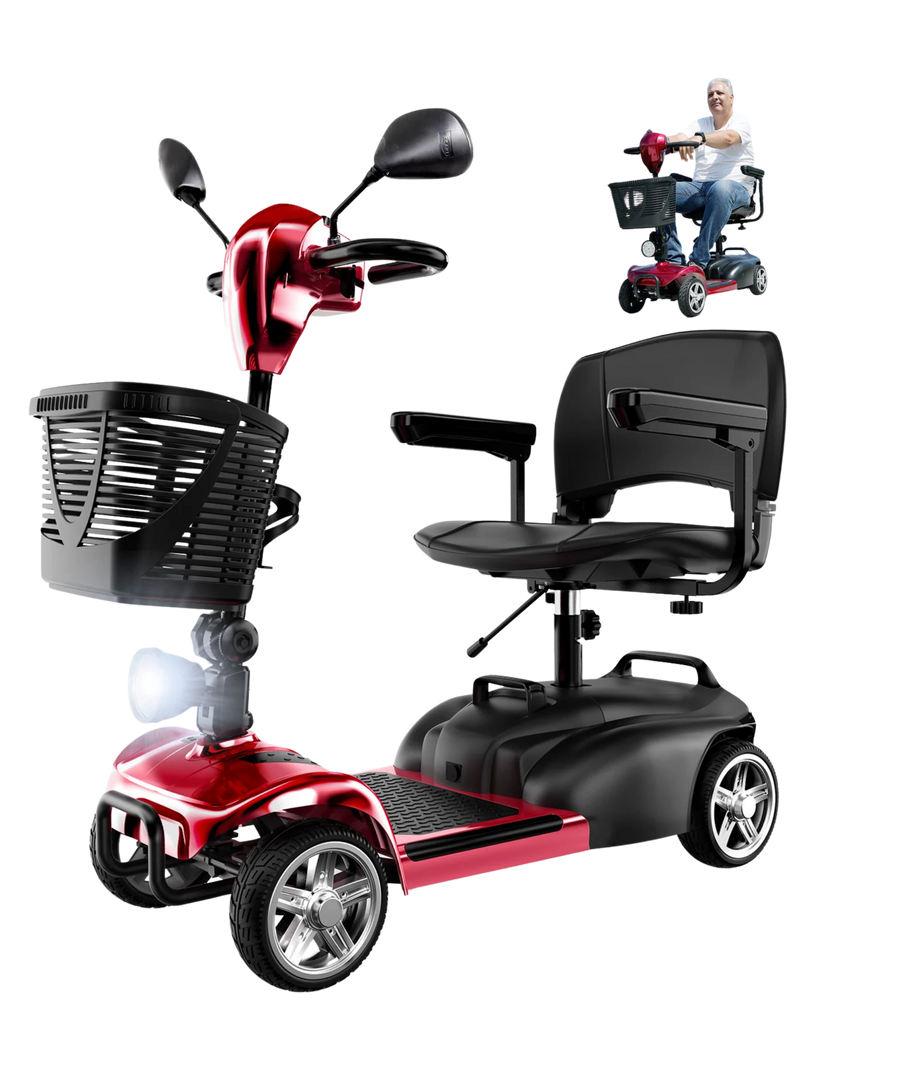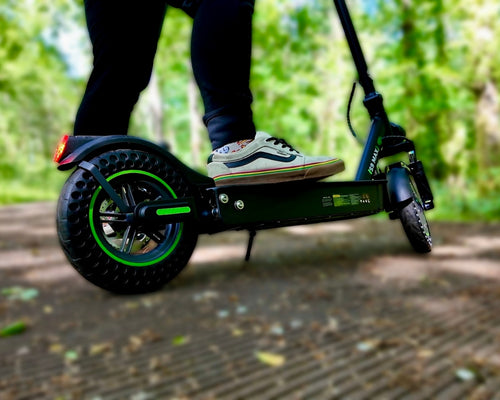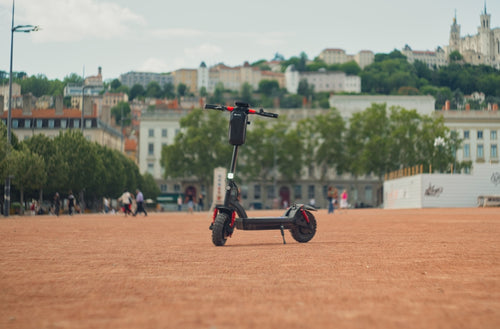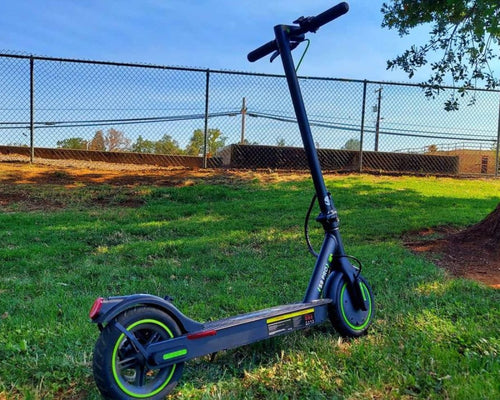
When Bike Was Invented – Complete History & Timeline Explained
Wondering when the bike was invented? The bicycle’s story stretches back more than 200 years, beginning with simple wooden machines and evolving into the advanced, lightweight and electric models we ride today. In this guide, we break down the full timeline of how the bike was invented—from early balance bikes and pedal-powered velocipedes to the modern e-bike revolution.
When Bike Was Invented: The First Confirmed Bicycle (1817)
Historians widely agree that the bike was first invented in 1817, when German inventor Baron Karl von Drais introduced a breakthrough two-wheeled design. His wooden machine, called the Draisine or Laufmaschine, was the first vehicle that allowed riders to balance and steer on two wheels. Although it didn’t have pedals and relied on foot-pushing for movement, its steering system and layout created the blueprint for the modern bicycle. This moment in 1817 is considered the official starting point in the history of bike invention.
Before 1817: Early Concepts and Controversial Claims
The 1790 Célérifère – Real Prototype or Historical Myth?
Before the first confirmed bicycle appeared in 1817, some early concepts hinted at the idea of two-wheeled transport. One of the most commonly cited examples is the Célérifère, attributed to Comte Mede de Sivrac around 1790. It was described as a simple wooden device with two wheels, no pedals, and no steering, meaning the rider pushed along with their feet in a very basic form of balance riding.
However, the Célérifère’s place in early bicycle history is highly debated. No physical model has ever been found, and most references come from later French writings, leading many historians to believe the story may have been exaggerated or even fictional. Because it lacked steering and mechanical function, it is not considered a true bicycle but rather an early experiment in human-powered movement.
Even with the controversy, the Célérifère remains part of the conversation because it shows that the idea of a two-wheeled vehicle existed before Karl von Drais. Whether myth or reality, it highlights the curiosity and early attempts that eventually paved the way for the first real bicycle in 1817.
Pedals Arrive: The Velocipede Revolution (1860s)
The 1860s marked a major leap in the history of bicycles with the introduction of the first pedal-powered bike. French inventors Pierre Michaux and Pierre Lallement revolutionised two-wheeled transport by attaching cranks and pedals directly to the front wheel. This upgrade transformed earlier balance machines into fully rideable bicycles, allowing riders to move faster, travel farther, and enjoy a more efficient form of human-powered mobility. The design quickly gained popularity, sparking a cycling boom across Europe and the United States.
This new machine, known as the Velocipede or Boneshaker, featured a wooden frame and iron tyres that made the ride notoriously rough on uneven roads. Despite the discomfort, it proved that pedal motion was the future of cycling. The Velocipede set the stage for rapid technological improvements, paving the way for chain-driven systems, safer frame geometry, and eventually the modern bicycles and e-bikes we recognise today.
The Penny Farthing Era: Speed Over Safety (1869–1880s)
The late 1860s introduced one of the most iconic designs in early bicycle history: the Penny Farthing, developed by Eugène Meyer and later popularised by James Starley. This high-wheel bicycle featured an oversized front wheel, allowing riders to cover long distances with a single pedal rotation. The design delivered impressive speed and quickly became a symbol of status, innovation, and athleticism during the Victorian era.
Despite its popularity, the Penny Farthing was notoriously risky. Its towering height made mounting and dismounting difficult, and riders sat dangerously far above the ground, leading to frequent “header” accidents when the front wheel hit obstacles. Still, it holds a special place in cycling history as the first two-wheeler commonly referred to as a “bicycle,” marking a key milestone in the evolution of modern bike design.
The Game-Changer: The Safety Bicycle (1885)
John Kemp Starley and the Modern Bike Blueprint
The Safety Bicycle, introduced in 1885 by John Kemp Starley, was a turning point in the history of bicycles. Featuring equal-sized wheels, a rear-wheel chain drive, and the diamond frame, it offered far greater balance, stability, and safety than the high-wheel Penny Farthing. This design made bicycles practical for daily use and became the foundation of modern bicycle design, influencing every bike that followed.
Introduction of Pneumatic Tyres (1888)
In 1888, John Boyd Dunlop invented the pneumatic tyre, revolutionising ride comfort by making bicycles smoother, faster, and easier to handle. This breakthrough, combined with Starley’s Safety Bicycle, fueled the first major cycling boom, cementing the bicycle as a popular mode of transport and leisure and paving the way for future innovations, including modern road bikes and electric bicycles.
The Golden Age of Bicycles (1890s)
The 1890s are often called the Golden Age of Bicycles, as cycling experienced mass adoption across Europe and the United States. Advances in technology, including metal frames, gears, and coaster brakes, made bikes more reliable, efficient, and comfortable for daily use. This period also saw the rise of cycling clubs, competitive racing, and leisure riding, turning bicycles into a key part of social life.
Bicycles played a significant role in women’s mobility and independence, allowing women to travel freely and challenge societal norms. Cycling influenced fashion, encouraged outdoor activity, and helped make bicycles an essential tool for both transportation and recreation, cementing their place in modern society.
The 20th Century: Innovation, Sport, and Utility
The 20th century brought major technological innovations that shaped modern bicycles. Early gear and derailleur systems allowed riders to tackle steeper hills and ride faster, turning bicycles into true performance machines. Competitive cycling also rose to prominence, highlighted by the launch of the Tour de France in 1903, which showcased endurance, speed, and engineering innovation.
Bicycles also became vital for military use during both World Wars, providing efficient and reliable transportation for soldiers. Meanwhile, in urban areas, bicycles grew in popularity for commuting, leisure, and touring. Innovations like folding bikes, touring bikes, and early mountain bikes expanded the functionality of bicycles, establishing them as versatile machines for both sport and everyday life.
Modern Bicycle Evolution (Late 20th – 21st Century)
In the late 20th and early 21st centuries, bicycle design advanced dramatically through new materials and engineering. Lightweight frames made from aluminium, carbon fibre, and titanium improved strength, performance, and aerodynamics, making bikes faster and easier to handle. These innovations helped bicycles evolve for racing, commuting, touring, and recreational riding.
Modern bicycles have also embraced smart technology, with innovations such as GPS bike computers, electronic shifting, and connected, IoT-enabled systems. These advancements allow riders to track performance, optimise routes, and maintain bikes remotely, merging traditional cycling with digital convenience. Together, material and technology innovations have shaped today’s bicycles into highly efficient, versatile, and connected machines.
When Electric Bikes Entered the Story
Rise of E-Bikes (2010s Onwards)
The 2010s marked the rapid rise of electric bicycles (e-bikes), combining powerful motors with lithium-ion batteries to assist riders and make cycling more accessible. E-bikes quickly gained popularity across Europe and Asia, offering a convenient solution for commuting, leisure rides, and fitness. By providing pedal assistance, they allowed riders to travel longer distances, tackle hills, and reduce physical effort, making cycling easier for people of all ages and fitness levels.
What This Means Today
Today, e-bikes have reshaped the cycling landscape, making bicycles practical, sustainable, and technologically enhanced. Modern models are designed for a variety of purposes, including daily commuting, recreational rides, and fitness training. With features like improved battery life, integrated displays, and connected apps, e-bikes combine traditional cycling benefits with modern technology, helping more people adopt cycling as a convenient and eco-friendly mode of transport.
The Future of Cycling: Discover isinwheel Electric Bikes
As bicycles continue to evolve, electric bikes have taken cycling to a whole new level. isinwheel e-bikes combine the convenience of modern technology with the legacy of over 200 years of bicycle innovation. Whether for commuting, fitness, or leisure, these e-bikes offer high performance, impressive range, and smart design, making cycling easier and more enjoyable for riders of all levels.
|
Images |
 |
 |
 |
 |
 |
 |
|
Models |
||||||
|
Top Speed |
20 MPH |
20 MPH |
18.6 MPH |
21.7 MPH |
19 MPH |
20 MPH |
|
Peak Power |
500W |
500W |
500W |
500W |
500W |
750W |
|
Battery |
36V 7.8Ah |
36V 13Ah |
36V 7.8Ah |
36V 10.4Ah |
36V 10.4Ah |
36V 10.4Ah |
|
Max Range |
28 miles |
65 miles |
35 miles |
60 miles |
55 miles |
55 miles |
|
Speed (before unlock) |
10/15/25 km/h |
6/10/15/20/25 km/h |
10/15/25 km/h |
6/10/15/20/25 km/h |
6/10/15/25 km/h |
6/10/15/20/25 km/h |
|
Speed (after unlock) |
15/25/32 km/h |
10/15/20/25/32 km/h |
15/25/30 km/h |
6/10/15/20/35 km/h |
15/25/30 km/h |
10/15/20/25/32 km/h |
|
Brake System |
front and rear disc brakes |
mechanical brake |
disc brakes |
mechanical disc brakes |
dual disc brakes |
dual disc brakes |
|
Max Load |
120 kg |
120 kg |
120 kg |
150 kg |
120 kg |
120 kg |
|
Net Weight |
23.2 kg |
27 kg |
23.3 kg |
27kg |
26.5 kg |
28.4 kg |
|
Suspension |
Rear mid shock absorber |
Front suspension |
Adjustable front fork + comfort saddle |
Hydraulic fork |
Dual |
Aluminum front fork |
|
Max Climb |
20% |
37% |
25% |
20% |
20% |
20% |
|
Tire Size |
14×1.95" |
26×1.95" |
16×1.75" |
26×1.95" |
16×2.15" |
26×1.95" |
|
Tire Type |
Pneumatic |
Pneumatic |
Pneumatic |
Pneumatic |
Pneumatic |
Pneumatic |
|
IP Rating |
IPX4 |
IP65 |
IPX65 |
IPX5 |
IPX4 |
IPX4 |
|
Removable Battery |
No |
Yes |
No |
Yes |
Yes |
Yes |
|
Rider Height |
150–185 cm |
160–192 cm |
155–185 cm |
160–190 cm |
140–180 cm |
150–192 cm |
Conclusion: The Bike’s Evolution Is Still Ongoing
So, when was the bike invented? The journey began in 1817 with Baron Karl von Drais’ Draisine, evolving through pedal-powered velocipedes, Penny Farthings, and Safety Bicycles.
Today, cycling continues to innovate with modern e-bikes. isinwheel electric bikes combine over 200 years of bicycle evolution with powerful motors, smart design, and long-range batteries, making commuting, fitness, and leisure rides easier and more enjoyable than ever.
FAQs
When was the first bike invented?
The first confirmed bicycle was invented in 1817 by Baron Karl von Drais in Germany. Known as the Draisine or Laufmaschine, it was a two-wheeled, pedal-free machine that riders propelled with their feet. This invention laid the foundation for modern bicycles, combining balance and steerability in a way that previous wooden contraptions never had.
When were bikes invented in the UK?
Bicycles reached the UK in the mid-19th century, gaining popularity with innovations like the Velocipede and later the Penny Farthing. British inventors such as James Starley refined designs, introducing high-wheel bicycles and eventually the Safety Bicycle in 1885, which became the blueprint for modern bikes used worldwide today.
Did bikes exist in 1890?
Yes, by 1890, bicycles were widely used across Europe and North America. This period, known as the Golden Age of Bicycles, saw mass adoption, improved metal frames, gears, and coaster brakes, as well as the rise of cycling for commuting, leisure, and sport, including a significant role in women’s mobility and independence.
Who invented the bicycle in 1790?
Around 1790, Comte Mede de Sivrac is credited with creating the Célérifère, an early two-wheeled wooden vehicle. While it had no pedals or steering and is not considered a true bicycle, it represents one of the earliest attempts to create a human-powered, two-wheeled transport device.
The Latest Posts
Explore isinwheel products
City E Scooter | Off-Road Scooter
Fastest Scooter | Kids Scooters































































Leave a comment